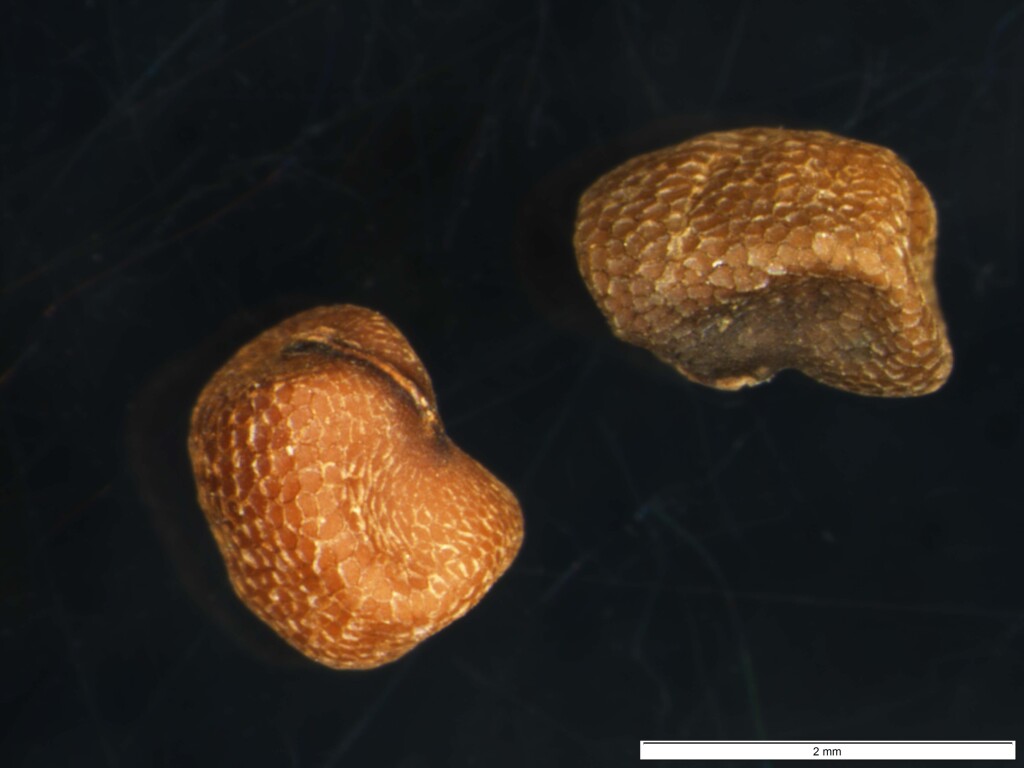Decumbent to ascending perennial to c. 25 cm high; stems densely hairy with tiny recurved hairs and few longer spreading hairs; taproot elongate, carrot-like. Leaves c. orbicular to reniform, 1.8–2.8 cm long, palmatifid to palmatisect with 5–7, trifid primary lobes; ultimate lobes obtuse to acute, upper surface glabrescent; stipules c. hastate to lanceolate, acuminate, rarely laciniate. Flowers solitary or paired; peduncles 2.1–3.8 cm long, pedicels 2.0–2.8 cm long (both elongating in fruit); sepals ovate to elliptic, 6–8 mm long, obtuse to retuse, hirsute with short appressed hairs and longer coarse hairs, mucro absent or to 0.5 mm long, margins broad, translucent; petals obovate, 8.5–12 mm long, truncate to retuse, pink to white, often with darker veins; anthers cream or yellow, at least sometimes with purple dehiscence lines. Fruits 18–21 mm long; mericarps sparsely short-pilose, hairs becoming longer toward awn, suture margins short-ciliate; seed rugose with large, deep, c. isodiametric alveolae. Flowering recorded in Apr., Jun., Dec.
VVP, VRiv, CVU, NIS, HSF, VAlp. Apparently endemic in Victoria. Known only from basaltic grassland (now generally weedy) in the Glenroy-Broadmeadows area, Riddells Creek and Malmsbury. It was presumed to be extinct, until rediscovered in 2000. Formally known from the far north-east near Wodonga.
Distinguished from Geranium solanderi by its large flowers (18–22 mm diam.), dense indumentum of short retrorse hairs (to long, spreading hairs on younger stems), inner sepals with membranous margin and obtuse to retuse apex, and very short (or absent) sepal mucro.

